When designing a bedroom, one of the most important decisions to make is how to organise the layout, as the way your furniture and decor are arranged has a big impact on the overall look, feel and functionality of the room.
With so many options for bedroom design and furniture positioning, it can be a daunting task to decide on the best layout for your space. So I decided to share some bedroom layout ideas and design tips to help you make the most of your room.
Disclaimer: As an Amazon, Awin and Wayfair associate, we do receive a small commission from qualifying purchases made via links within this article.
Bedroom Design Ideas for Comfort
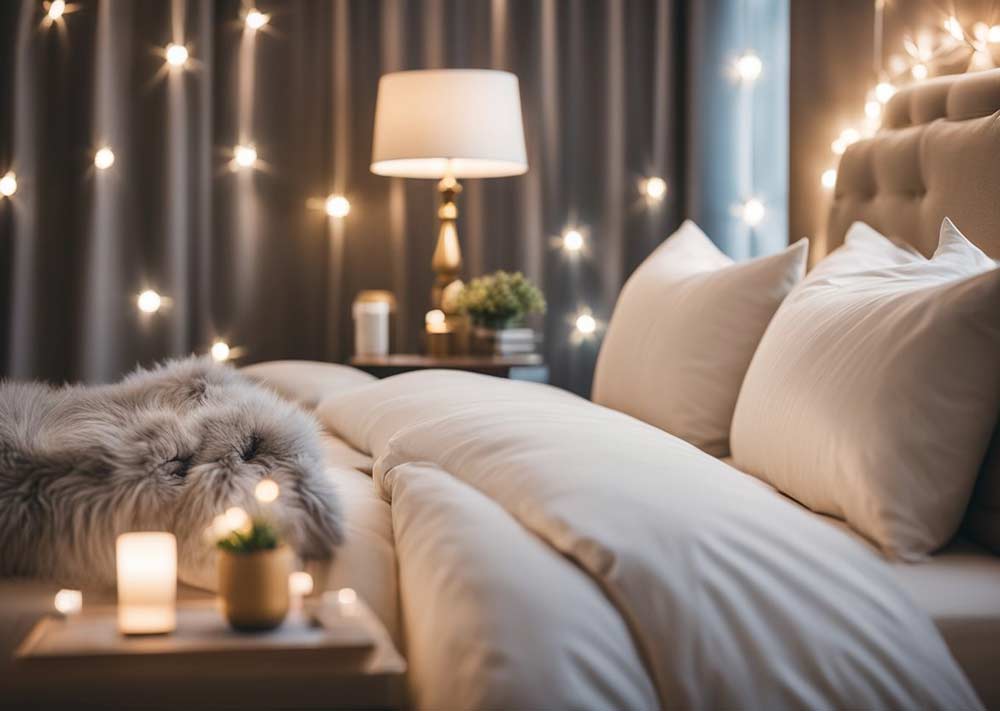
As someone who values a good night's sleep, I'm well aware of how important the bedroom is for motivation and mental health. We spend a significant amount of our time resting and recharging, and as such, the sleeping area should be designed with comfort and rest in mind.
In this section, I will discuss the importance of beds, the role of nightstands, and lighting considerations when designing a calming bedroom space.
The Importance of Beds
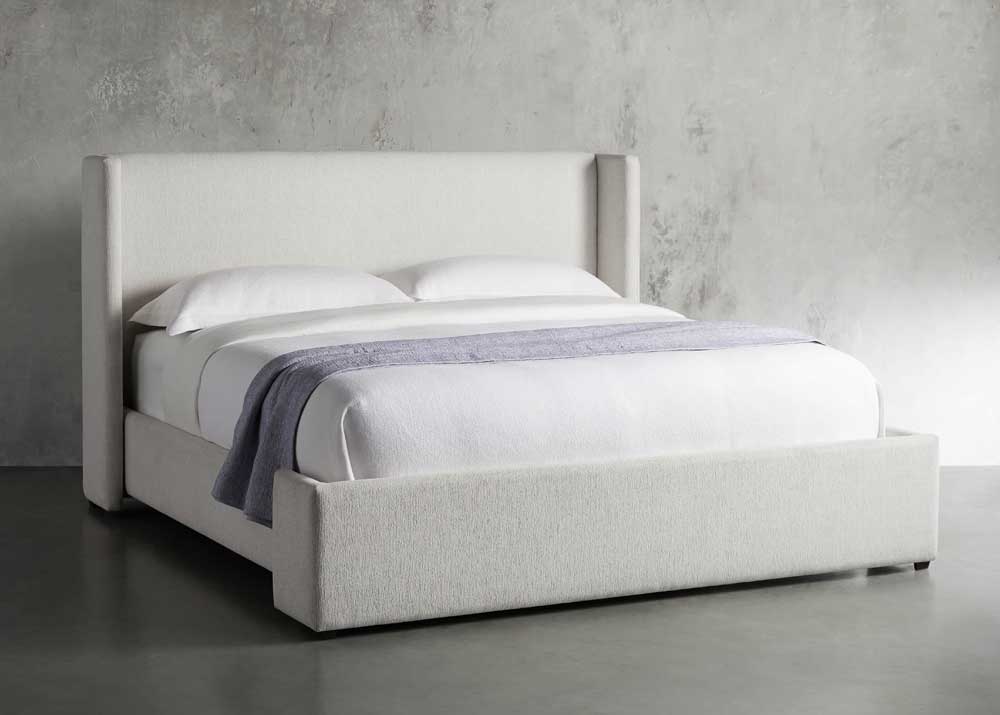
Image credit: arhaus.com
It goes without saying that the bed is the most important piece of furniture in any bedroom, and it is essential to choose one that is comfortable and supportive. A good mattress is the foundation of a good night's sleep, so it is worthwhile investing in a high-quality one.
When selecting a mattress, I suggest that you consider your sleeping position, body type, and any health conditions you may have, such as back pain or arthritis.
In addition to the mattress, the bed frame and bedding should also be chosen with comfort in mind. A bed frame that is too low or too high for your needs can be uncomfortable, so choose one that is the right height for you. The bedding itself should be soft and breathable and made from materials that are appropriate for the season.
Recommended Affiliate Partner
The position of the bed also plays a pivotal role in any bedroom layout ideas. It is the largest piece of furniture in the room and will have a big impact on how the entire room looks, feels and functions. There are many different ways to position your bed, depending on the size and shape of your room.
There are also other furniture pieces to consider when designing your bedroom. Dressers, nightstands, and chairs all help to create a functional and comfortable space. Whether you have a large main bedroom or a small guest room, there are plenty of bedroom layout options to make the most of your space.
The Role of Nightstands
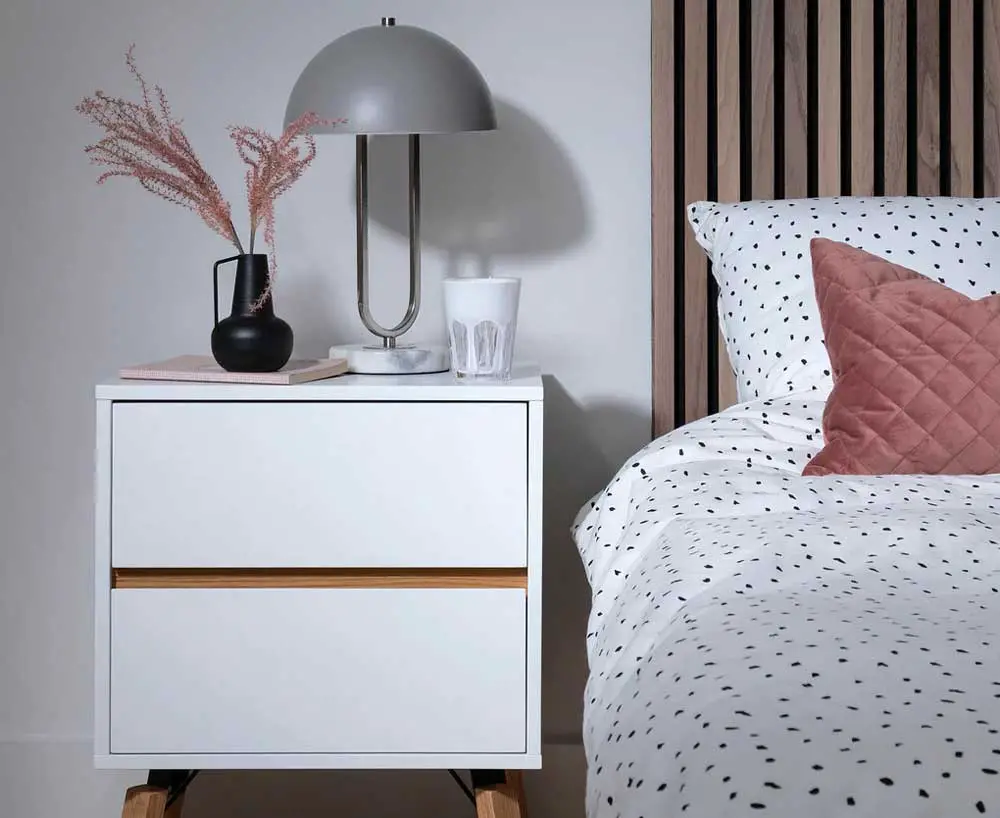
Image credit: noaandnani.co.uk
Nightstands are a practical addition to any bedroom ideas, as they provide a convenient place to store items such as books, glasses, and phones. When choosing a nightstand, consider the size of your bed and the amount of space you you have to play with beside your bed. A nightstand that is too small may be perfect for a small space, but will not be particularly functional, while one that is too large may take up too much space and overpower the general aesthetic of the room.
In addition to size, you also need to think about the design and practicalities of the piece. A nightstand with drawers or shelves can provide additional storage space, while one with a built-in lamp can provide convenient lighting for reading in bed.
Bedroom Lighting Considerations
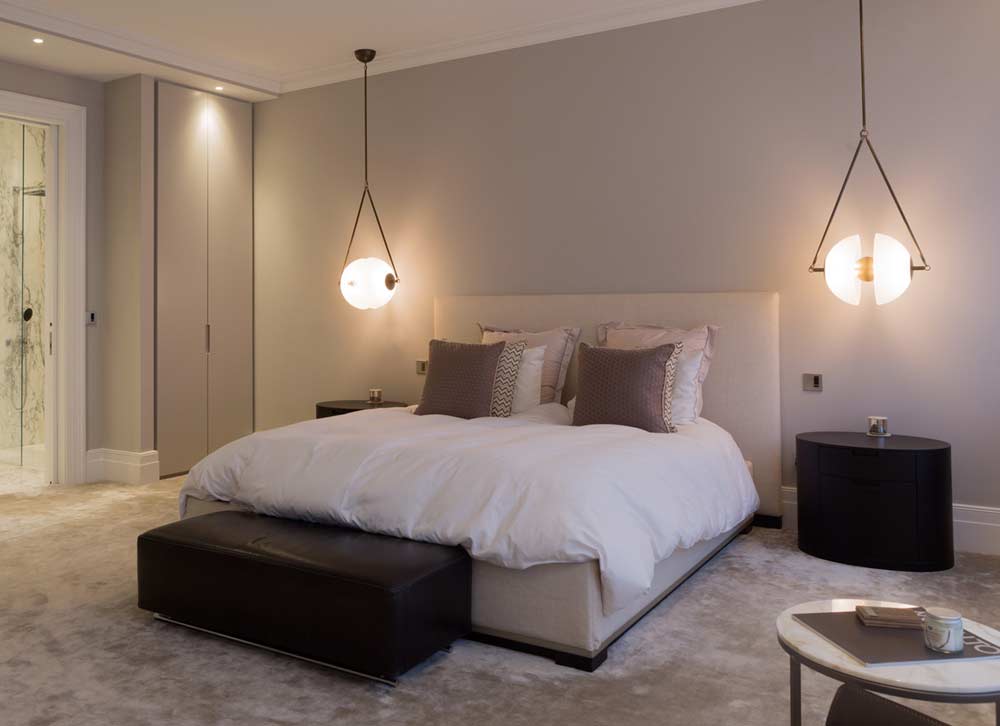
Image credit: lightingdesignstudio.co.uk
When designing a sleeping space for comfort and rest, lighting plays a key role. Bright overhead lighting can be harsh and disruptive to sleep, so it is vital to choose lighting that is soft and soothing, whether that be using a dimmer switch or low-wattage bulbs.
Table lamps, wall lights and floor lamps can also provide soft ambient or task lighting, depending on your needs.
Recommended Affiliate Partner
In my experience, the placement of the lights, as well as the type of lighting that you choose, can make or break to ambiance of the bedroom.
Lights should be placed in areas where they will not shine directly towards your face when you are lying in bed. It is also worth considering the colour temperature of the lighting. Warm, yellow-toned lighting will be far more relaxing in a bedroom setting than cool, blue-toned lighting.
Bedroom Styling and Aesthetics
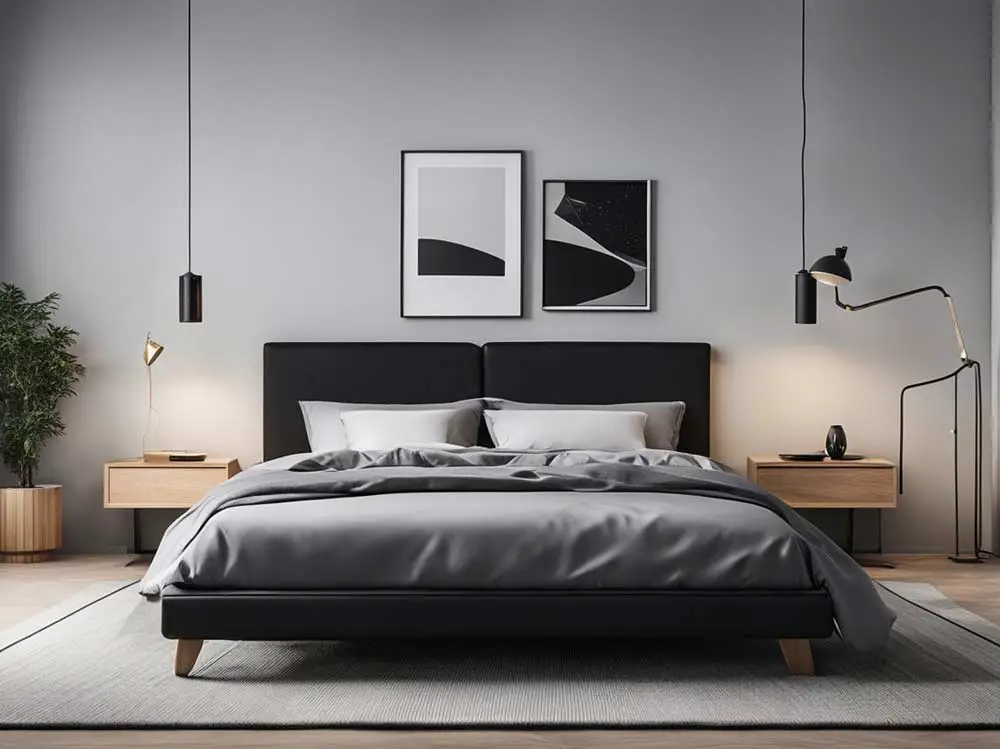
When it comes to designing a bedroom, style and aesthetics will always be paramount. The style of your bedroom should reflect your personality and design tastes while offering a space that is comfortable, cosy and inviting. Here are some further considerations when designing the look and style of your bedroom:
Feng Shui and Bedroom Colours
Colour is without a doubt a crucial element of bedroom design to get right. The colours you choose can have a significant impact on your mood and overall well-being. To delve deeper into how colours affect our sleep, visit my article on the best colours for a peaceful nights sleep.
As for bedroom layout ideas, I advise that you consider looking into Feng Shui. Feng Shui is a Chinese practice that involves arranging furniture and decor in a way that promotes positive energy flow.
For colour suggestions in your bedroom design ideas, Feng Shui recommends using calming colours such as blue, green, and lavender. These colours are believed to promote relaxation and restful sleep.
Artwork and Mirrors
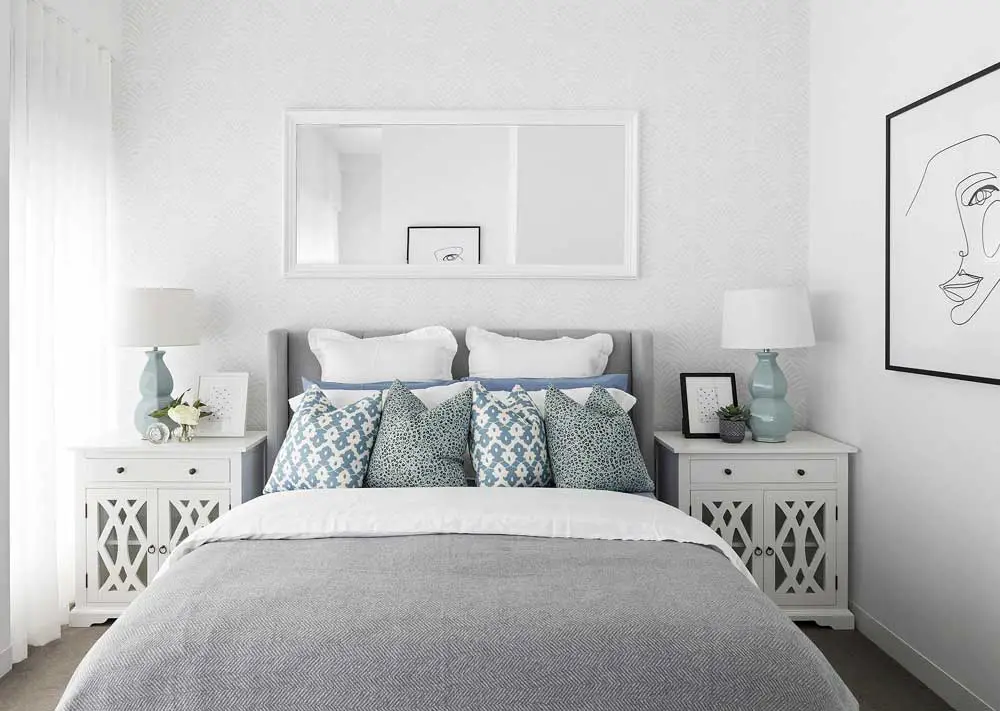
Image credit: tlcinteriors.com.au
As any interior designer can attest, artwork and mirrors are a great way to add personality and style to your bedroom decor.
When choosing artwork, I would consider looking for pieces that reflect your style, interests and of course artistic preferences. Don't be too keen to buy the first piece of wall art that you like, as the more you search, the more chance you have of finding that 'perfect piece'.
Mirrors are a versatile wall decoration that can not only be used to check how you look but also help to create the illusion of extra space by reflecting natural light. This will inevitably make your bedroom feel brighter and more open. However, be careful not to place mirrors in a way that reflects your bed, as this is believed to create negative energy.
Create Symmetry and Balance
When arranging furniture and decor in your bedroom, try to create a sense of balance by placing items in pairs or a symmetrical layout. This can help to create a calming and harmonious atmosphere and aesthetic in your bedroom.
Additionally, incorporating elements of nature such as plants or natural materials like wood can help to add a further feeling of balance and tranquillity.
Maximising Small Bedrooms
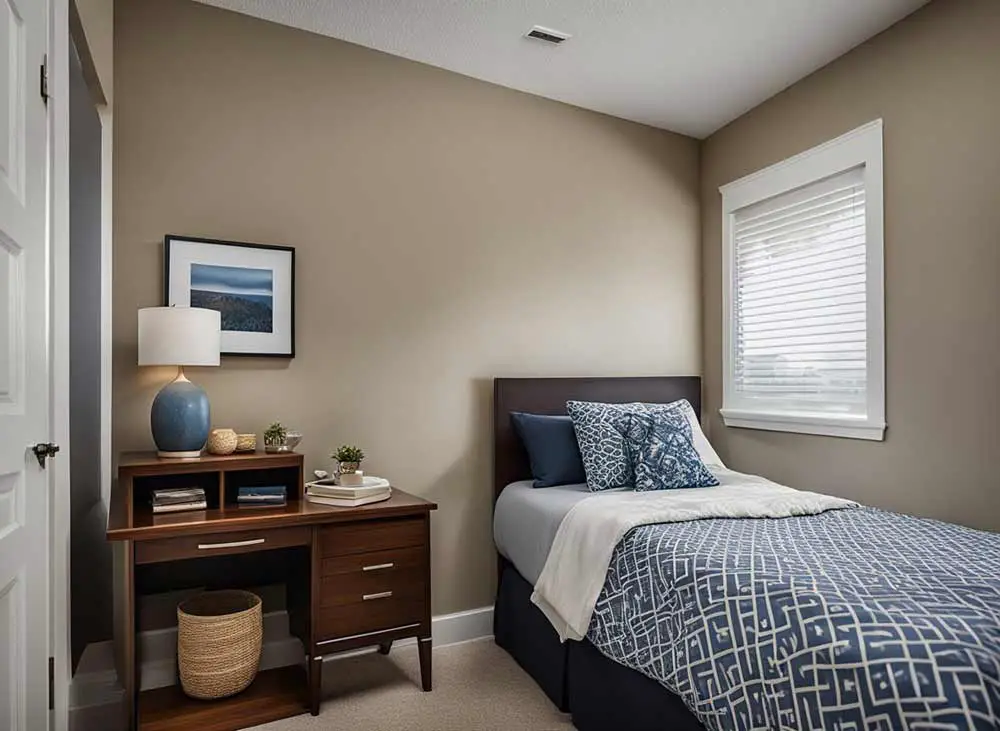
As someone who has lived in a small bedroom, I know how challenging it can be to make the most of the limited space available (and believe me I tried!). However, with some creative thinking and effective furniture placement, it's possible to maximise the floor space in even the smallest of bedrooms.
Effective Furniture Placement
To maximise the available space when considering small bedroom layout ideas, effective furniture placement is key. One of the best ways that I know to maximise space is to choose furniture that serves multiple purposes. For example, a bed with built-in storage or a desk that doubles as a bedside table can help you make the most of your limited floor space.
It's also important to consider the flow of the room when placing furniture. Avoid blocking windows or doors, as this can make the room feel cramped and uncomfortable. Instead, try to arrange furniture in a way that creates a natural flow and makes the room feel more open and spacious.
Maximising Floor Space
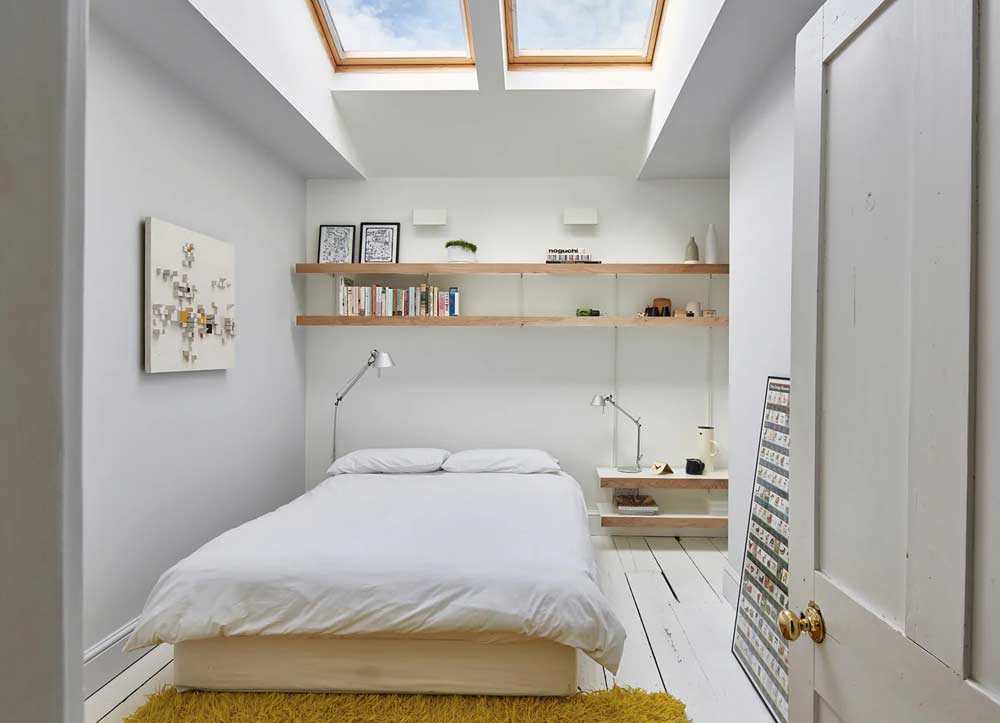
Image credit: madebyonandon.com
A key factor in maximising the space in small bedrooms is to make the most of all available floor space. This can be achieved through a variety of methods, such as using wall-mounted shelves or utilising hanging storage solutions.
Another effective way to maximise floor space is to choose furniture that is scaled to fit the room. It may be nice to have, but I would never advocate using a large queen-size bed in a tiny room for instance. Stick to smaller furniture pieces that are better suited to the space you have available.
Create a Seating Area
When it comes to bedroom ideas, creating a practical seating area, such as a window seat, is a great way to make a small bedroom feel more functional and useful. If you don't want to go to the extent of having a window seat fitted, you can simply add a small armchair or bench at the foot of the bed, if space allows.
When searching for the right seating for your small bedroom, it's even more important to consider the scale of the furniture you choose, and how it will fit in the room.
Bedroom Storage Solutions
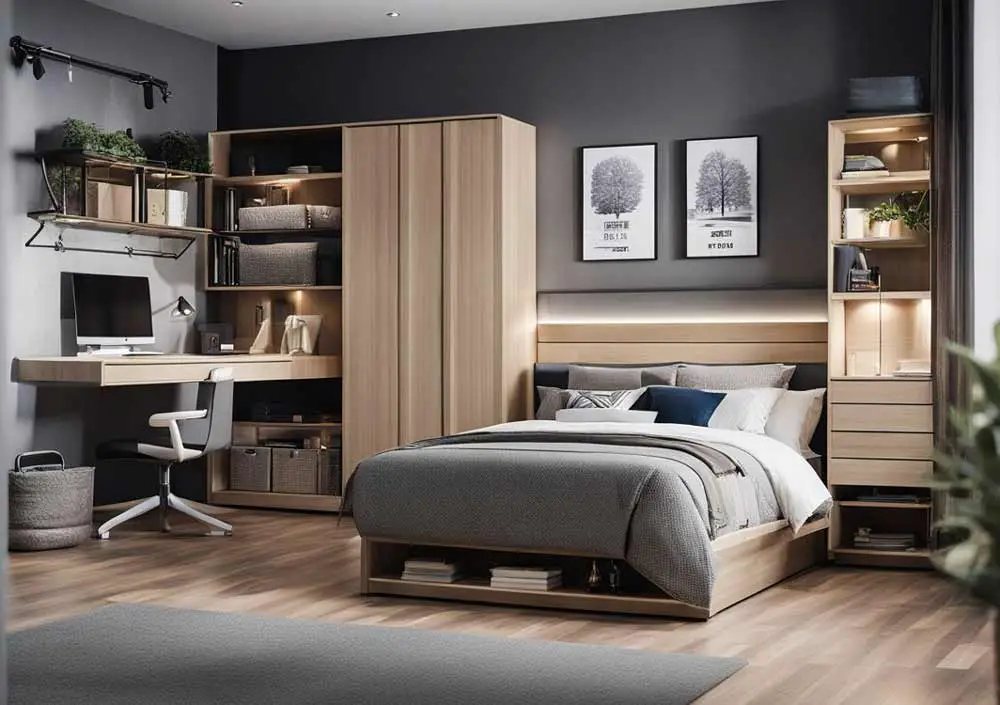
As someone who loves a tidy and organised bedroom, I know that storage solutions are key to achieving this. Here are some bedroom ideas for how to maximise storage:
Wardrobes and Dressers
Wardrobes and dressers are essential pieces of furniture in any bedroom. They provide important storage for clothes, shoes, and accessories and are great for hiding clutter.
When picking a wardrobe or dresser, the size of your bedroom and the amount of storage you need are the main considerations. A built-in wardrobe can be a great space-saving solution, due to the amount of vertical space that can be utilised, while a dresser with drawers and shelves can provide more flexibility for your daily needs.
Dressing Tables and Desks
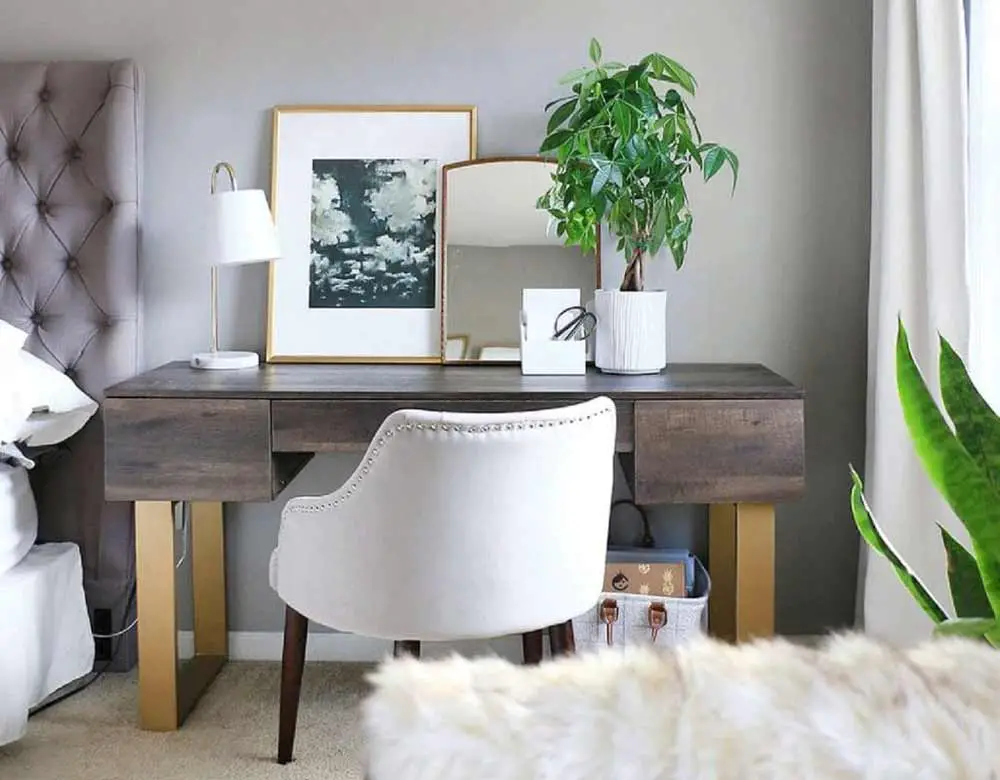
Image credit: homilo.com
Dressing tables and desks serve as excellent storage solutions in a bedroom due to their dual functionality. They not only provide a designated space for grooming or work but also have a multitude of drawers and compartments that can be utilised for handy storage. This maximises the bedroom space, keeping it clutter-free and organised.
A dressing table or desk can effortlessly blend functionality with aesthetics, enhancing the room's decor, while efficiently storing personal items, stationery, or cosmetics. They also create a designated area for daily rituals or focused work, promoting a sense of order and productivity within the bedroom environment.
Not to mention that it also provides a comfy chair to sit on!
Alcoves With Built-in Storage
Making use of bedroom features such as alcoves, by adding built-in storage, is a sensible way to maximise storage space in a small bedroom. Alcoves are the perfect place for creating a built-in wardrobe or shelving unit.
Built-in storage solutions can be easily customised to fit your requirements and used to store pretty much anything you desire, from clothes and shoes to board games and paperwork.
By using these bedroom ideas, you can save space and create a tidy and organised bedroom that is functional, stylish and works perfectly for your needs.
Additional Bedroom Design Ideas
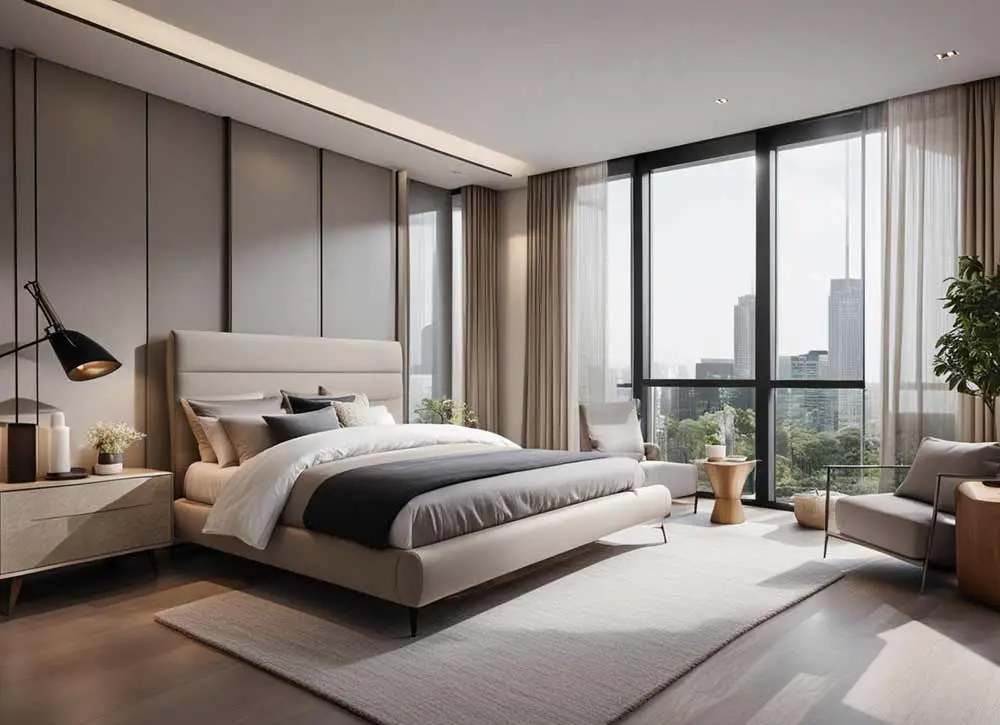
Windows and Natural Light
I believe that windows and natural light are very important features to consider when designing bedroom layouts. Natural light can make a room feel more spacious, brighter, and can even have a positive impact on our mood and health.
For that reason, it is important to consider the orientation of the bed and seating and the positioning of the windows. Consider fitting larger windows if you want to fully maximise natural light.
If privacy is a concern, use window treatments such as blinds, curtains or privacy blinds. These can also be used to control the amount of light and heat that enter the room, creating a more comfortable sleeping environment.
Utilise a Fireplace as the Focal Point
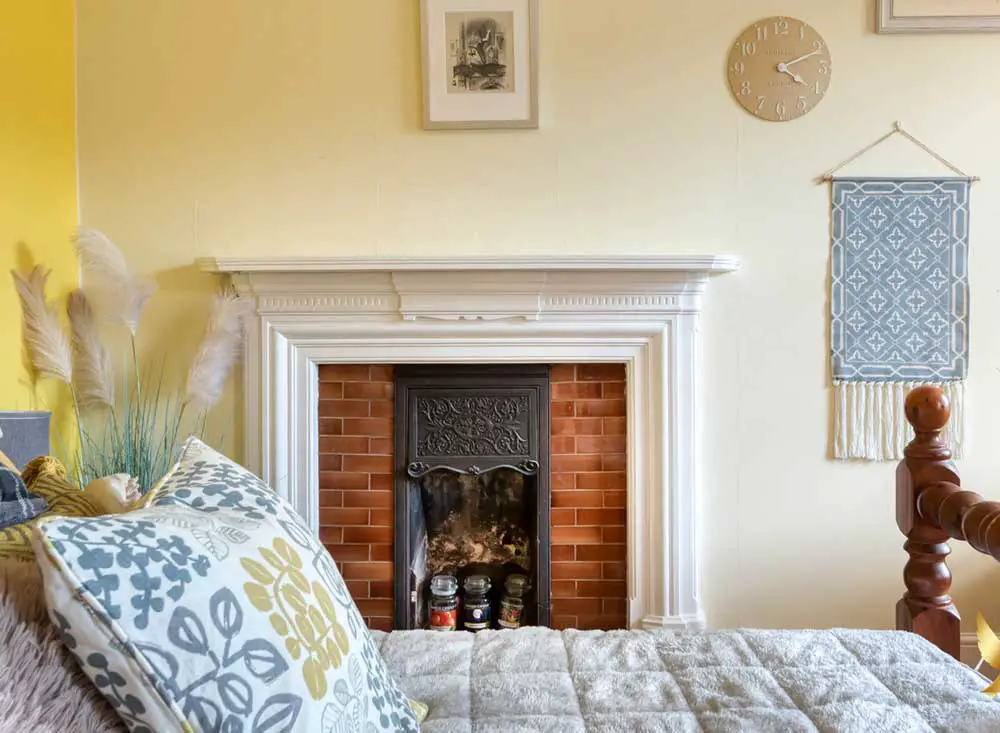
Image credit: freeagent247.com
A fireplace can be a great focal point in any bedroom, creating a cosy and inviting ambience. When designing a bedroom layout, it is important to consider the placement of the fireplace to ensure that it is visible and accessible from the bed.
A fireplace can also be used to create symmetry in the room. Try placing matching armchairs or other furniture on either side of the fireplace to create a balanced and harmonious layout.
Vaulted Ceilings
A vaulted ceiling adds a sense of grandeur and spaciousness to any bedroom space. It can also be used to create a focal point in the room, drawing the eye upwards and offering verticality.
When planning a bedroom layout with vaulted ceilings, consider further maximising the vertical space by incorporating tall furniture pieces.
Use the height to create visual interest, balancing the room's proportions. Opt for lighting fixtures that accentuate the lofty ceiling, and ensure adequate insulation to regulate temperature.
Bedroom Layout Ideas
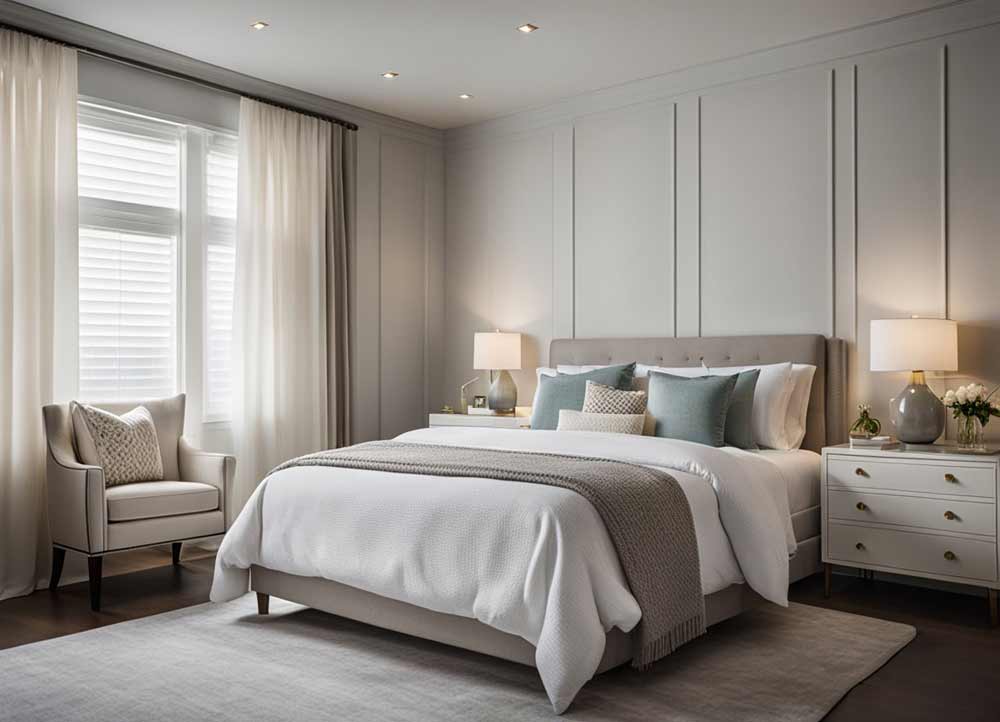
When planning out bedroom layouts, I always consider the type and usage of the bedroom that I am working with. Different types of bedrooms require different layouts to optimise the space and create a comfortable and functional environment.
Here are some of the most common bedroom types and the layouts that work best for them:
Master Bedroom Layout
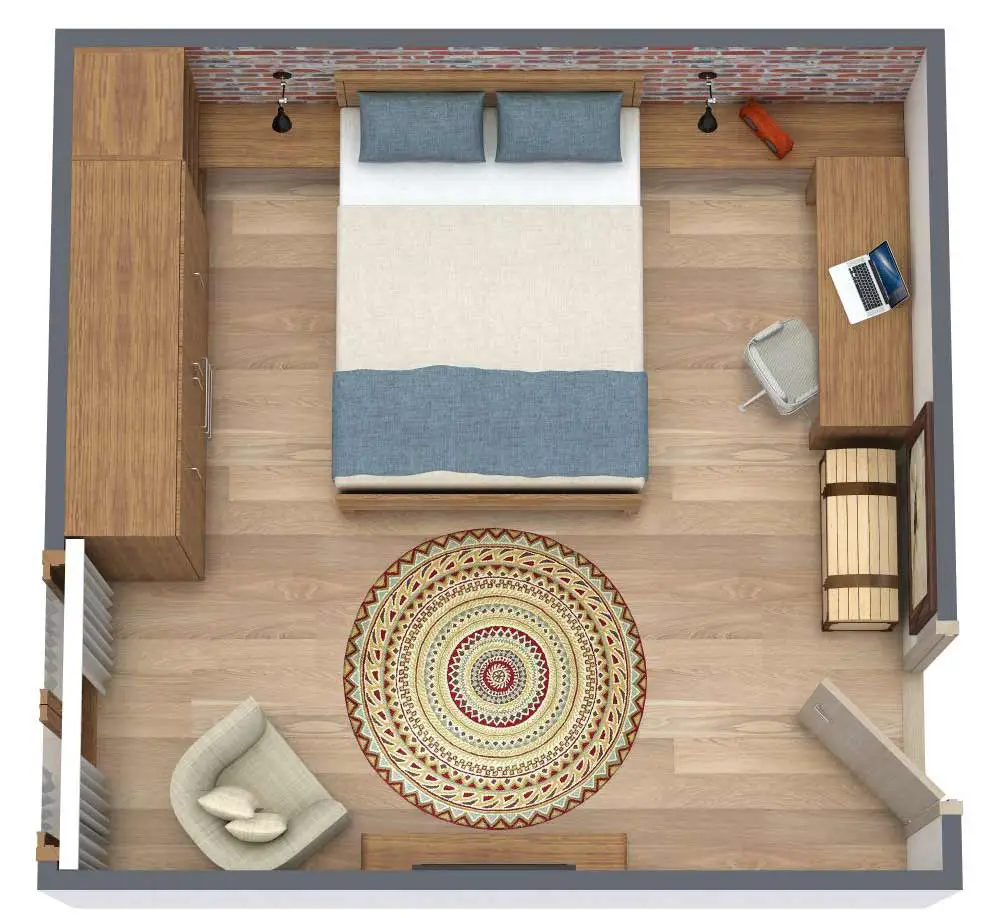
Image credit: roomsketcher.com
The master bedroom is typically the largest in the house and is usually occupied by the homeowners. When designing a primary bedroom layout, it is important to create a space that is comfortable, functional, and relaxing. Here are some tips for master bedroom layout ideas:
- Start with the bed: The bed is the focal point of the room, so it should be the first thing you consider when designing the layout. Position the bed in a way that allows for easy access and creates a comfortable flow around the room.
- Consider a cosy seating area: If space allows, consider adding a small seating area to the main bedroom. This can be a great place to relax and take stock.
- Optimise storage: A primary bedroom should have plenty of storage space for clothes, shoes, and other personal items. Why not add a walk-in closet or built-in storage to maximise the space further?
Guest Bedroom Layouts
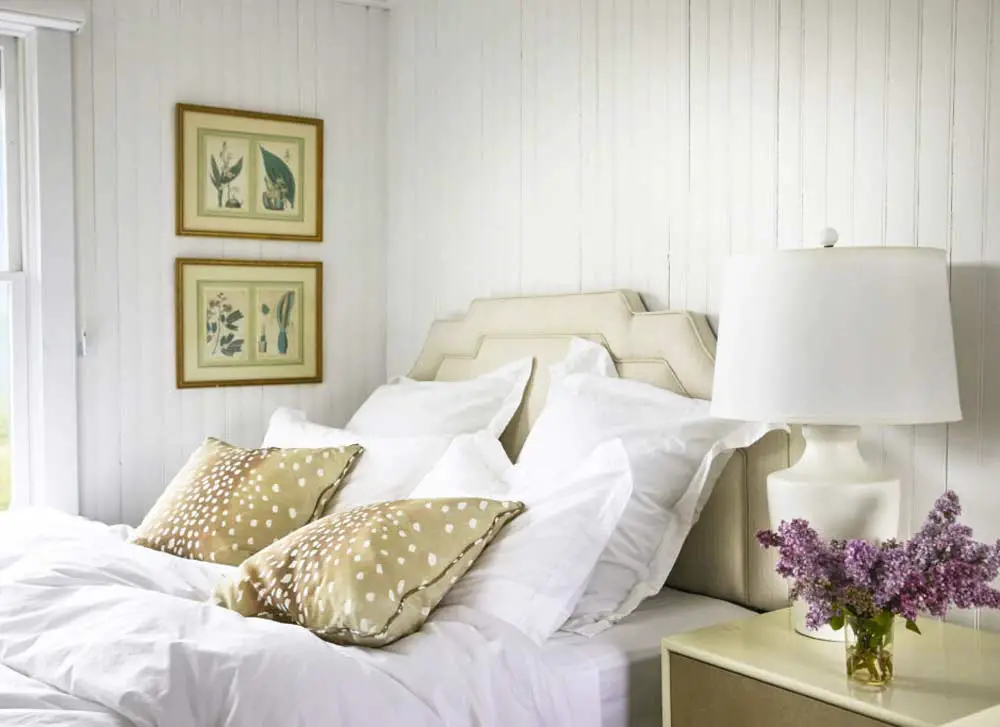
Image credit: theinside.com
A guest bedroom is typically smaller than a master bedroom and is designed to accommodate family or friends. When designing a guest bedroom layout, it is important to create a space that is comfortable and homely. Here are some guest bedroom layout ideas:
- Opt for a neutral colour palette: A neutral colour palette creates a calming and welcoming environment for guests and will not offend the occupant.
- Consider a king-sized bed: If space allows, a king-sized bed is a comfortable size for most guests and will afford two people a good night's sleep.
- Add storage: Guests will appreciate having space to store their belongings when they stay. For this reason, consider adding a dresser or closet to the room.
Bunk Bed Layout
Bunk beds are a great way to maximise space in a bedroom, especially in children's rooms. When designing a bunk bed layout, it is important to design a space that is safe and functional. Here are my tips for designing a bunk bed layout:
- Consider the age of the children: Younger children should have lower bunk beds to reduce the risk of injury from falls.
- Allow for headroom: Bunk beds should have a minimum of 2 feet of headroom to ensure that children can sit up comfortably when in bed.
- Add storage: Bunk beds can be a great space-saving solution, but they can also create a lot of clutter. Consider adding storage solutions like built-in shelves or drawers to keep the room tidy.
These are just a few examples of bedroom types, uses and bedroom layout ideas that work well for them.
Tips and Advice for Layout Design - A Recap
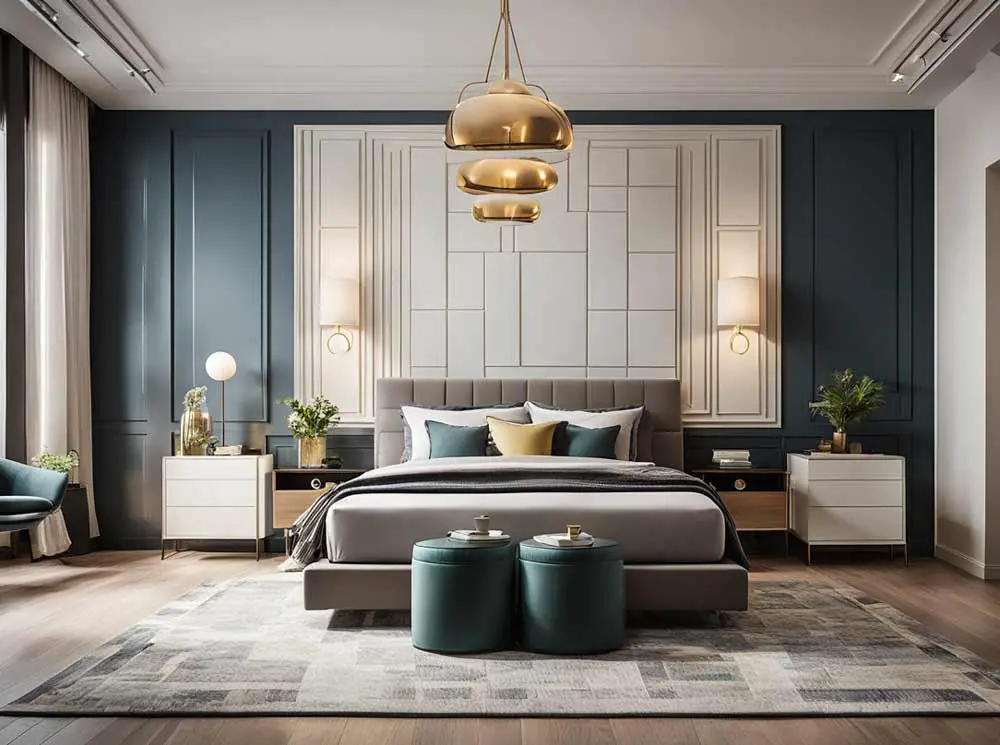
When it comes to bedroom layout ideas, it's very important to consider both functionality and aesthetics. Here are my tips and advice to help you create the perfect bedroom designs and layout:
- Start with a floor plan: Before you start rearranging furniture, create a scale floor plan of your bedroom layout. This will help you visualise how everything will fit together and ensure that you have enough walking space to move around comfortably. It will also allow you to consider various layouts without having to move a single piece of furniture.
- Think about flow: When arranging furniture, consider the flow of the room. Make sure that there is enough space between pieces of furniture so that you can move around easily, and ensure that the placement of furniture doesn't block any windows or doors.
- Choose the right bed: The bed is the focal point of any bedroom, so it's important to choose the right one. Consider the size of your room, your sleeping habits, and your taste when choosing a bed.
- Create a seating area: If you have enough space, consider creating a seating area in your bedroom. This can be a great spot to read, relax, or watch TV.
- Use lighting to set the mood: Lighting is an important element in any bedroom. Use a combination of overhead lighting, task lighting, and accent lighting to create the perfect mood.
- Don't forget about storage: Storage is essential in any bedroom. Consider incorporating built-in wardrobes, a chest of drawers, or under-bed storage to keep your space organised and clutter-free.
By following these tips, you can create a bedroom layout that any interior designer would be proud of.
My Final Thoughts
Designing a bedroom layout is challenging, but it is worth the effort to create a comfortable, functional and aesthetically pleasing space.
It is important to remember that there is no one-size-fits-all solution when it comes to bedroom design. The ideal layout will depend on your personal preferences, the square footage and shape of the room, and any architectural features that you need to work around or can utilise.
When considering bedroom layout ideas and design, it is imperative that you incorporate storage solutions. Adding built-in wardrobes, shelving, and drawers will help to keep your bedroom clutter-free and organised.
Finally, don't forget the importance of lighting in your bedroom design. A combination of ambient, task, and accent lighting can help to create a comfortable and inviting atmosphere.
Frequently Asked Questions
What are the best furniture pieces for a bedroom?
When it comes to choosing furniture pieces for a bedroom, it's important to consider both functionality and style. The bed is the most important piece of furniture, and it should be chosen based on your personal preferences and needs. Other essential pieces of furniture include a dresser or chest of drawers for clothing storage, bedside tables for lamps and other essentials, and a comfortable chair or bench for seating.
What is the best way to arrange furniture in a small bedroom?
In a small bedroom, it's important to maximise space and create a sense of openness. One effective way to do this is to position the bed against the longest wall and to use smaller furniture pieces like nightstands and dressers. Consider using a wall-mounted shelf or floating desk to save floor space.
Another tip is to use light, neutral colours to make the room appear larger and less oppressive.
How can I make the most of a square-shaped bedroom layout?
A square-shaped bedroom can be challenging to design, but with the right layout, it can still be a cosy and inviting space. One effective way to make the most of a square-shaped bedroom is to use a symmetrical layout, with the bed centred on one wall and matching bedside tables on either side. Use a rug to define the space, and add a comfortable chair or bench for seating.
What are some bedroom layout ideas with a desk?
If you need to include a desk in your bedroom layout, there are a few options to look at. One effective layout is to position the bed against one wall, with the desk against the opposite wall, balancing out the space. Another option is to use a loft bed with a built-in desk underneath, this will make the best use of the floor area.


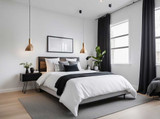
 Author: Matthew Chiappini
Author: Matthew Chiappini